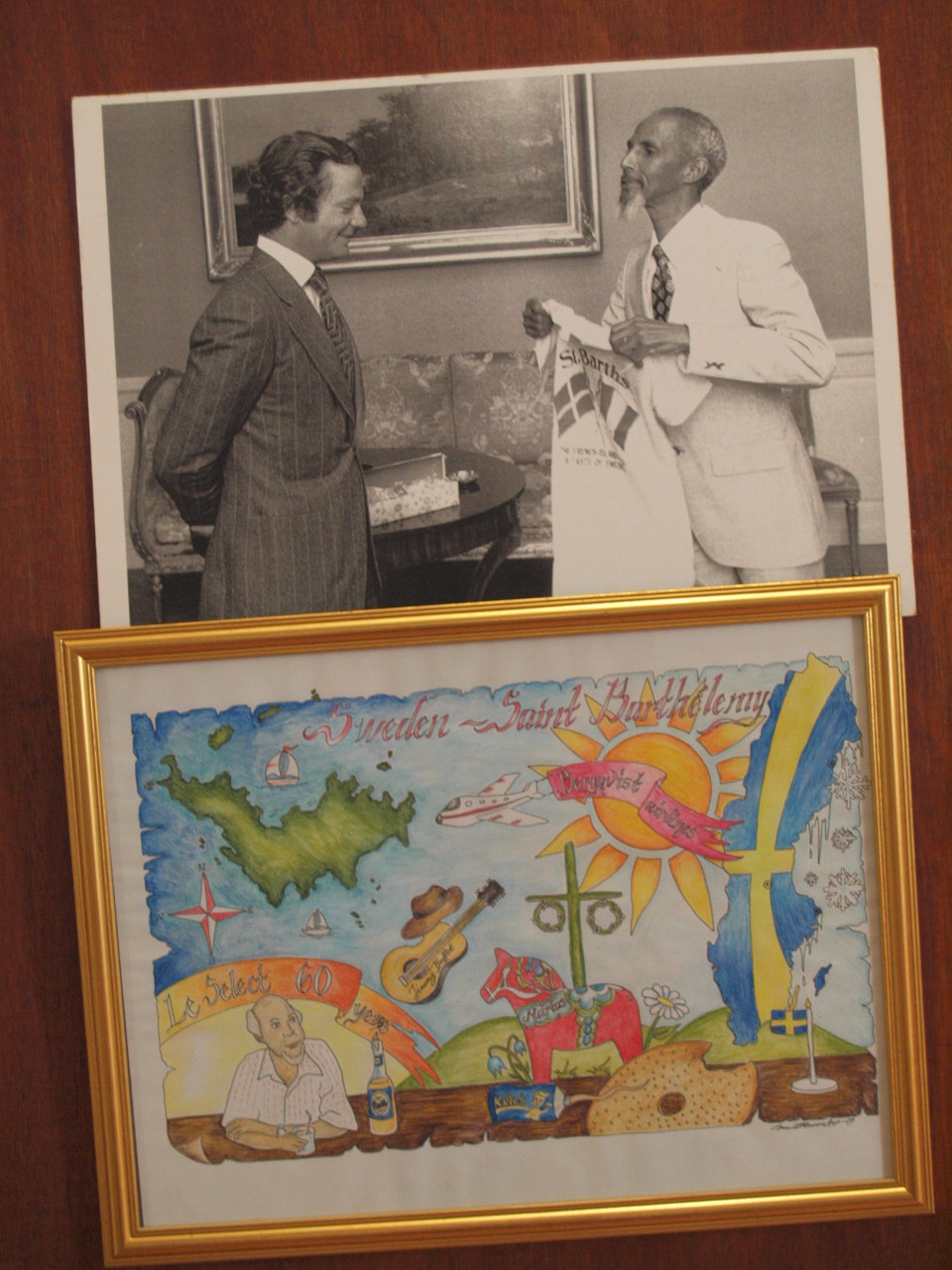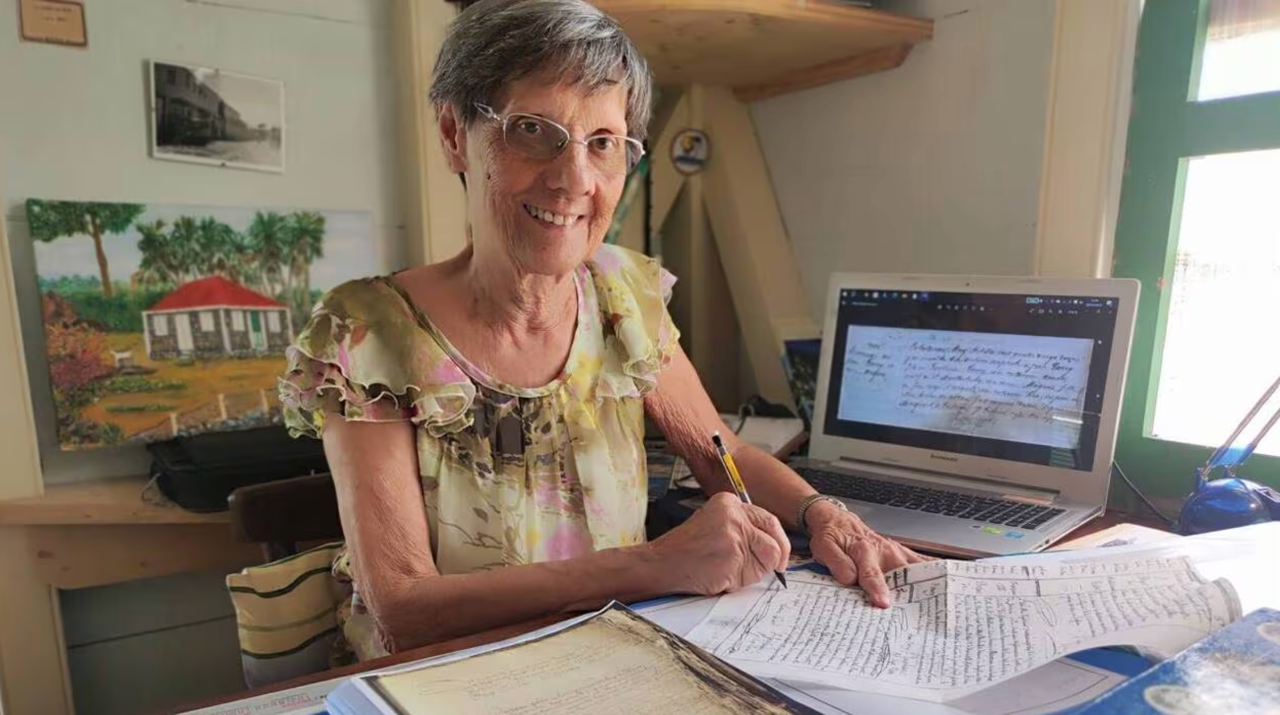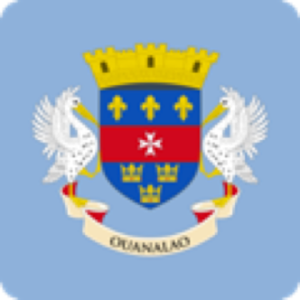St. Barth of Sweden
St. Barth history in brief
Histoire St. Barth en bref
St. Barth historia i korthet
Originally the island was called Ouanalao and this name is still visible on StBarth city arms. There are many stories about who discovered the island and gave it its name. One is that Christopher Columbus was on the neighboring island of St. Martin did see St. Barth from there and named the island after his brother Bartholomeo. Another says that it was Bartholomeo himself that baptized the island when he was governor of Santa Domingo and it is supposed to happened 1496. Fact is that you can find the name on a map from 1623.
The Spaniards, who in the 1600s was looking to colonize the Caribbean islands, was not interested in St. Barth because the island was too small. So the island was sold to the Knights of Malta in 1661 and it is believed that some hundred people lived on the island in 1664. In 1661 the French 'Compagnie des Indes Occidentales' took over the island but it was not successful or long-term for the French company dissolved 1674. French State then took care of St. Barth together with Guadeloupe.
On March 7, 1781 Sweden officially took over the island from the French who, in exchange, was granted free trade rights in Gothenburg. St Barth had few natural resources and the colony was disappointing at first. But pretty soon it was realized that the naturally protected harbor instead was a gift. The French called the bay 'Le Carenage' and around this bay the island capital of Gustavia was built. The town was named after the Swedish King Gustaf III, who negotiated the takeover of France. That same year, 1781, Gustavia was declared the town 'Porto Franco', a tax-free port for all ships of all nationalities. It proved to be a successful move, especially during the Revolutionary and Napoleonic wars when the neighboring islands ports closed for some nations.
Transit trade blossomed up properly, a golden age that lasted nearly 50 years. But when the war ended the neighboring islands harbors opened and they copied Gustavia successful concept of tax exemption. As if that wasn't enough, the island was hit by hurricanes and fires, which eventually led to St. Barth became a burden rather than an asset to the Swedes. On March 16, 1878 St Barth was returned to France for a modest sum, but in the treaty was written that Gustavia would retain their tax-free status. The agreement played a crucial role when St. Barth July 1st, 2007 received the status of 'Collectivite d'Outre Mer'. In the 1960s luxury tourism started on St Barth when the known financial families of Rockefeller and Rothschild discoverer the island's beauty and climate. And that's the way it is still today.
A l'origine l'ile a ete appelee Ouanalao par les indiens des Caraibes. Ce nom est toujours sur les armoiries de St. Barth. II y a beaucoup d'histoires en ce qui concerne la decouverte de l'ile et qui lui a donne son nom. La premiere est que Christophe Colomb etait sur l'ile voisine, St. Martin et voyant St. Barth il a nomme l'ile d'apres son frere Bartholomew. D'autres disent que c'etait Bartholomew lui-meme qui a baptise l'ile quand iI etait gouverneur de Santa Domingo en 1496. Le fait est que le nom est sur une carte des 1523. Les Espagnols, qui dans les annees 1600, cherchaient coloniser les Iles des Caraibes, n'ont pas ete interesses St. Barth parce que etait si petite.
L'ile a ete vendue aux Chevaliers de Malte en 1661 et on croit qu'une centaine de personnes vivaient sur l'ile en 1664. En 1665, Ia 'Compagnie des Indes Occidentales' francaise a pris la succession de l'ile, mais cela n'a pas ete une reussite et n'a pas dure Iongtemps parce que cette 'Compagnie' francaise a ete dissoute en 1674. Ensuite I'Etat francais s'est occupe de St. Barth qui etait reuni avec Ia Guadeloupe. Le 7 mars 1785 La Suede a repris officiellement l'ile aux Francais qui, en echange, ont eu les droits de libre-echange a Goteborg. St Barth avait peu de ressources naturelles et la colonie a ete une deception au debut. Mais assez vite, on s'est rendu compte que le port naturel etait un lieu bien protégé. Les Francais ont appele Ia baie 'Le Carenage' qui signifie ???ou on a passé les personnes sous Ia carene.
Autour de cette baie on a planifie de construire la capitale de l'ile. On l'a nommee Gustavia d'apres le roi suedois Gustaf III, qui a negocie la reprise de cette colonie de la France. La meme annee, 1785, la ville a ete declaree 'Port Franc', c'est a dire un port libre d'impot pour tous les navires de toutes nationalites. On pensait que c'etait un coup reussi, surtout pendant la Revolution francaise et les guerres napoleoniennes lorsque les ports des Iles voisines etaient fermes a certaines nations. Ensuite, le commerce de transit a bien prospere, un Age d'or qui a dure presque 50 ans. Mais quand la guerre a pris fin alors les portes des autres Iles voisines ont ete rouvertes et elles ont copie le concept de succes de Gustavia, soit les ports francs. En outre, l'ile a ete touchee par les ouragans et les incendies. St Barth est devenu un fardeau plutot qu'un atout (une bonne affaire). Le 16 mars, 1878 St Barth a ete vendu a la France pour une somme modeste, mais dans le traite il a ete ecrit que Gustavia pouvait garder son statut exonere d'impot. Ce traite a joue un role crucial pour St Barth le 15 juillet 2007, lorsque l'ile a recu le statut de Collectivite d'Outre Mer (COM). Dans les annees 1960 le tourisme de luxe a augmente a St Barth. Lorsque les familles des Rockefeller et des Rothschild ont decouvert la beaute et le climat de l'ile. Et c'est encore ainsi aujourd'hui.
Ursprungligen hette ön Ouanalao vilket fortfarande syns på St Barths stadsvapen. Det finns många historier om vem som upptäckte ön och gav den sitt namn. En är att Christoffer Columbus som var på grannön St. Martin såg St. Barth därifrån och döpte ön efter sin bror Bartholomeo. En annan menar att det var Bartholomeo själv som döpte ön när han var guvernör på Santa Domingo och man tror att det hände 1496. Men fakta är att namnet finns på en karta från 1423.
Spanjorerna, som på 1600-talet var ute efter att kolonisera västindiska öar, var inte intresserade av St Barth eftersom ön var så liten. Ön såldes därför till Malteserriddarna 1661 och man tror att det bodde ett hundratal personer på ön 1664. År 1665 tog franska ”Compagnie des Indes occidentales” över ön men det blev varken lyckat eller långvarigt för det franska ”compagniet” som löstes upp 1674. Franska staten tog då hand om St. Barth som förenades med Guadeloupe. Den 7 mars 1781 övertog Sverige officiellt ön från fransmännen som i utbyte fick frihandelsrättigheter i Göteborg. St Barth hade få naturtillgångar och kolonin var en besvikelse till en början. Men ganska snart insåg man att den naturligt skyddade hamnen istället var det.
Fransmännen kallade viken for ”Le Carenage” vilket betyder kolhållningsplatsen. Runt denna vik planerades och byggdes öns huvudstad som döptes till Gustavia efter den svenske kungen Gustaf Ill som förhandlat fram övertagandet från Frankrike. Samma år, 1781, förklarades staden 'Porto Franco”, en skattefri hamn för alla skepp av alla olika nationaliteter. Det visade sig vara ett lyckat drag, speciellt under revolutions-och napoleonkrigen då grannöarnas hamnar stängdes för vissa nationer.
Då blommade transithandel med bland annat slavar upp ordentligt, en guldålder som varade i nästan 50 år. Men när krigen tog slut så öppnades grannöarnas hamnar och de kopierade snabbt Gustavias framgångsrika koncept med skattefrihet. Dessutom drabbades ön av orkaner och bränder vilket så småningom gjorde att St. Barth blev en börda istället för en tillgång. Den 16 mars 1878 såldes St. Barth åter till Frankrike för en blygsam summa men i traktatet skrevs det in att Gustavia skulle behålla sin skattefria status. Det avtalet spelade en avgörande roll när St. Barth den 1:a juli 2007 fick statusen av ”Collectivite d'Outre Mer”. På 1960-talet började lyxturismen på St. Barth när de kända finansfamiljerna Rockefeller och Rothschild upptäckte öns skönhet och klimat. Och på den vägen är det än idag.

Det svenska arvet lever vidare
The Swedish heritage lives on
L'héritage suédois perdure
Det är mycket tack vare ASBAS (L'Association SAINT-BARTH des Amis de Suède), vars medgrundare samt hedersordförande var Marius Stakelborough och på senare tid Arlette Magras som blev ny ordförande 1996. Arlette har lagt ner massor av tid på forskning om öns historia, inte minst när det gäller den svenska epoken på ön. Hon har ett flertal gånger besökt Sverige där hon ägnat många timmar åt källforskning i de svenska arkiven. År 2016 blev hon utsedd till "Årets Kvinna" på ön tack vare hennes ambitiösa arbete. Tillsammans med sin bror har hon också rustat upp deras föräldrars tomt som ligger nära infarten till Gustavia och skapat en unik kombination av historiskt museum och botanisk trädgård under namnet "Domaine Félicité". I september 2024 tilldelades Arlette Magras den franska utmärkelsen "Médaille d'honneur de l'engagement ultramarin" för hennes långa och gedigna arbete med att kartlägga och dokumentera öns historia, inte minst den svenska.
This is largely thanks to ASBAS (L'Association SAINT-BARTH des Amis de Suède), whose co-founder and honorary president was Marius Stakelborough and more recently Arlette Magras, who became the new president in 1996. Arlette has spent a lot of time researching the island's history, not least when it comes to the Swedish era on the island. She has visited Sweden several times, where she has spent many hours researching sources in the Swedish archives. In 2016, she was named "Woman of the Year" on the island thanks to her ambitious work. Together with her brother, she has also renovated their parents' plot of land which is close to the entrance to Gustavia and created a unique combination of historical museum and botanical garden under the name "Domaine Félicité". In September 2024, Arlette Magras was awarded the French award "Médaille d'honneur de l'engagement ultramarine" for her long and solid work in mapping and documenting the island's history, not least the Swedish one.
C'est en grande partie grâce à l'ASBAS (L'Association SAINT-BARTH des Amis de Suède), dont le co-fondateur et président d'honneur était Marius Stakelborough et plus récemment Arlette Magras, qui en est devenue la nouvelle présidente en 1996. Arlette a passé beaucoup de temps à faire des recherches sur l'histoire de l'île, notamment en ce qui concerne l'époque suédoise sur l'île. Elle s'est rendue plusieurs fois en Suède, où elle a passé de nombreuses heures à rechercher des sources dans les archives suédoises. En 2016, elle a été nommée « Femme de l'année » sur l'île grâce à son travail ambitieux. Avec son frère, elle a également rénové le terrain de leurs parents qui se trouve à proximité de l'entrée de Gustavia et a créé une combinaison unique de musée historique et de jardin botanique sous le nom de « Domaine Félicité ». En septembre 2024, Arlette Magras a reçu la Médaille d'honneur de l'engagement ultramarin pour son long et solide travail de cartographie et de documentation de l'histoire de l'île, notamment de la Suède.

